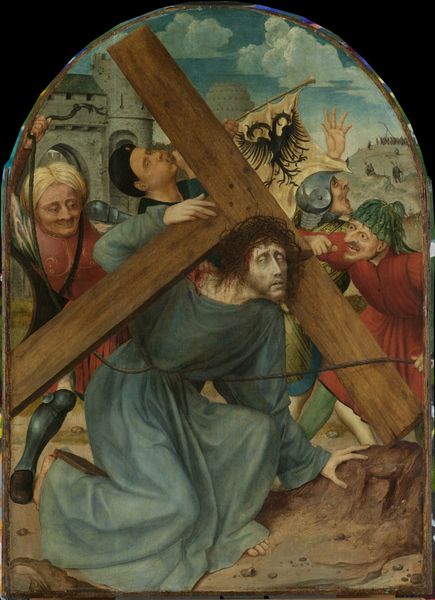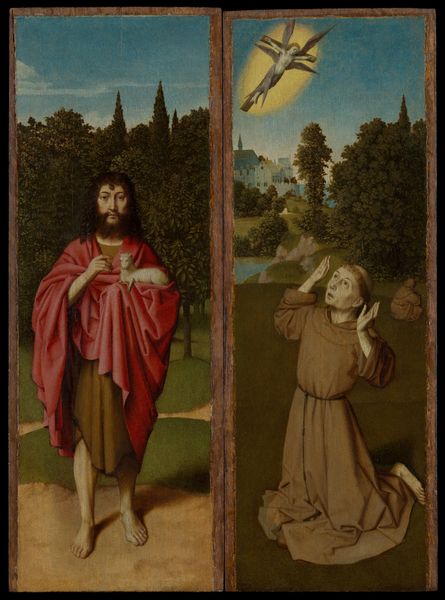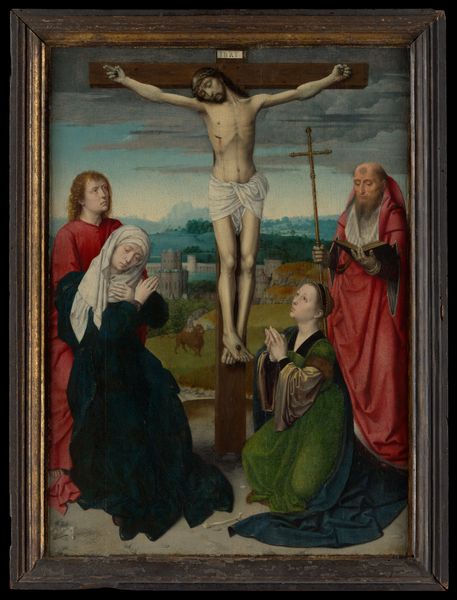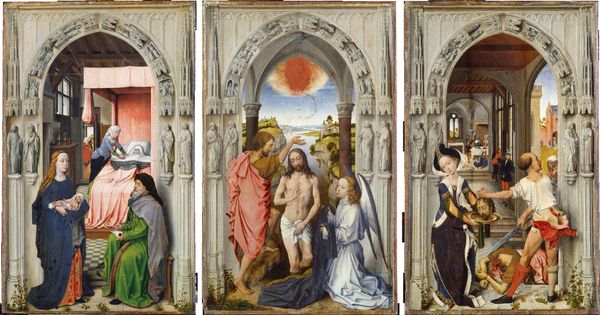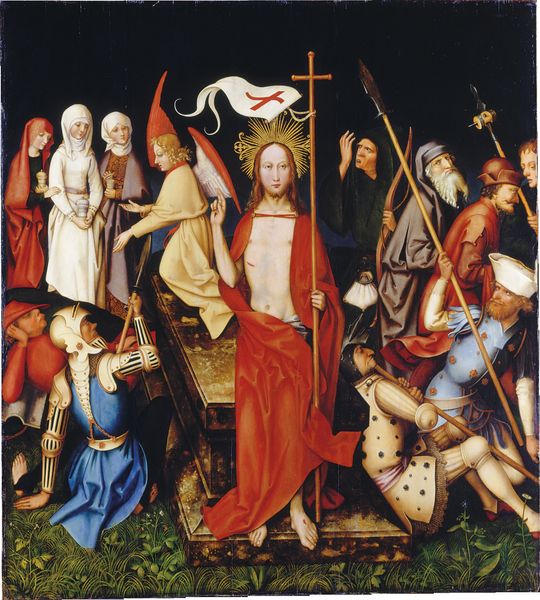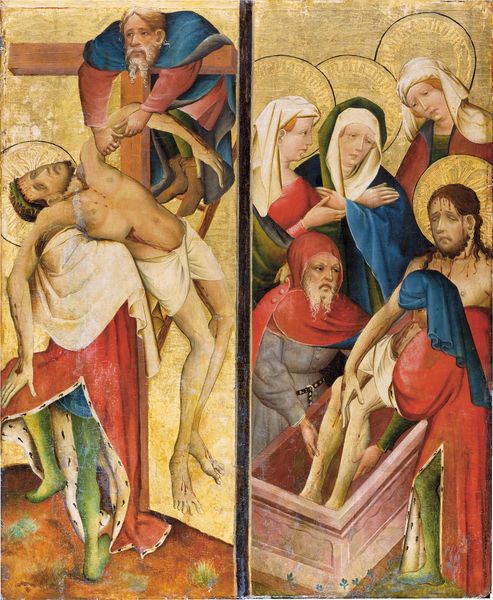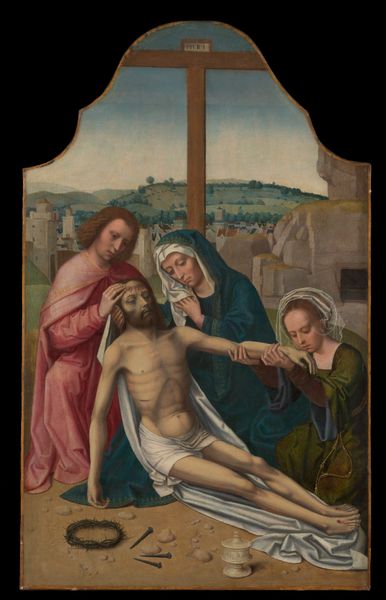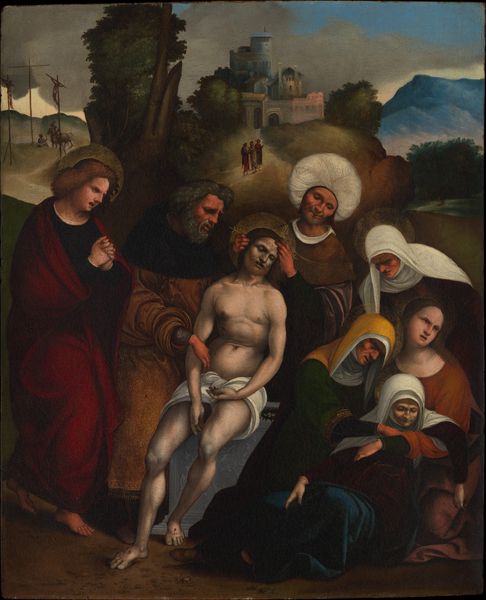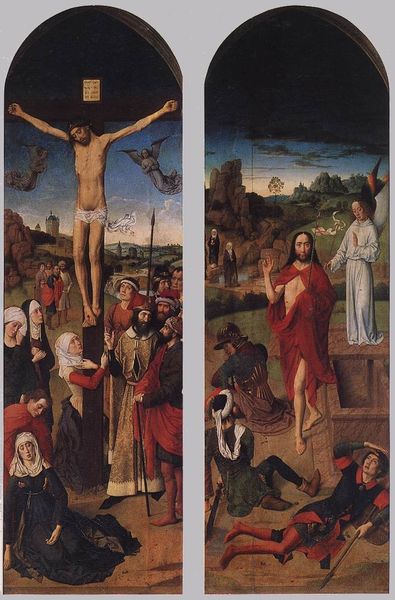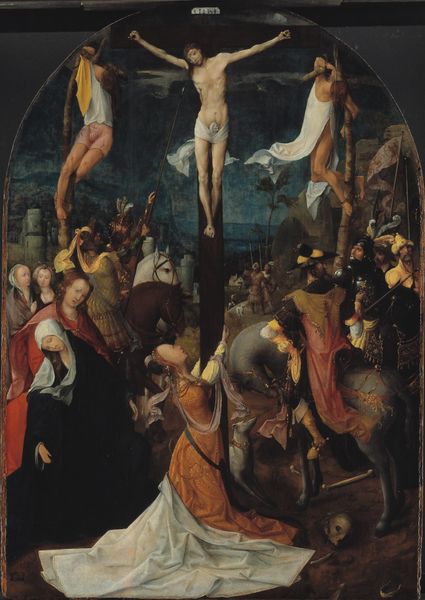
Christ Carrying the Cross, with the Crucifixion; The Resurrection, with the Pilgrims of Emmaus 1507 - 1513
0:00
0:00
painting, oil-paint
#
portrait
#
painting
#
oil-paint
#
landscape
#
figuration
#
11_renaissance
#
crucifixion
#
history-painting
#
northern-renaissance
#
christ
Dimensions: Left wing: 34 1/2 x 11 5/8 in. (87.7 x 29.5 cm), painted surface 34 x 11 in. (86.4 x 27.9 cm); right wing: 34 1/2 x 11 3/4 in. (87.6 x 30 cm), painted surface 34 x 11 1/8 in. (86.4 x 28.2 cm)
Copyright: Public Domain
Editor: This diptych, "Christ Carrying the Cross, with the Crucifixion; The Resurrection, with the Pilgrims of Emmaus," created by Gerard David between 1507 and 1513 using oil paint, presents two distinct yet connected scenes. I’m struck by how grounded and…human…the divine figures feel despite the inherent symbolism. How do you interpret this work? Curator: From a materialist perspective, I'm immediately drawn to the significance of oil paint itself. David's choice allows for meticulous detail, building layers upon layers to create luminous surfaces and capture texture - the gleam of metal armor, the rough grain of the cross. The labor involved in creating such an object - grinding pigments, preparing panels, applying these thin glazes - speaks volumes about the value placed on religious imagery and the skill of the craftsman in this period. Consider the timber and how that speaks to availability and means of carpentry in the region, reflecting class status. What else stands out regarding the social and economic context, within the confines of artistic skill and materials? Editor: Well, seeing Christ’s suffering and triumph depicted in such rich materials definitely complicates the message. The expense involved seems almost contradictory to the themes of humility and sacrifice. Curator: Precisely. This tension is central. The artwork's inherent value as a commodity for elite consumption must always be questioned alongside its spiritual function. The cost of labor and imported pigments used directly challenges common assumptions around sacred iconography. Are these items made for devotion, display, or something in between? It brings forth difficult questions concerning value and production, challenging the very idea of devotion, Editor: That's a really interesting point; I hadn’t considered it that way before! Now, when I look at it, I’m questioning what function it ultimately served! Curator: Exactly, this artwork becomes a study into commodity, devotion, and skill; something to question rather than something to believe.
Comments
No comments
Be the first to comment and join the conversation on the ultimate creative platform.
